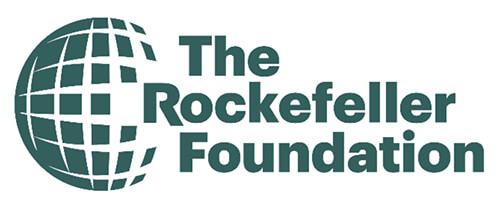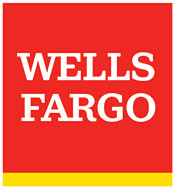Create an easy-to-use program intake, participation, and support process.
- Employ a one-stop shop approach that provides centralized outreach and communication, educational resources for both renters and owners, technical assistance and customer support, project management, and access to incentives and financing through a single entity. Structure the program so participants have a single, dedicated point of contact to guide them through the process. Ensure that the point of contact is sufficiently trained and has cultural competency.
- Provide a single, consolidated application that serves as an entry point to the program. Create a no wrong door approach with categorical eligibility based on a household or property's participation in other programs (e.g. the Supplemental Nutrition Assistance Program (SNAP), WAP, LIHTC, Section 8) and referrals provided to and from rental assistance programs, housing counseling, legal support, and utility incentive programs.1 By "no wrong door," we mean that participants use one single application to enter the program and are referred by their point of contact in the program to services for which they are eligible. Avoid eligibility processes that are overly restrictive or onerous for applicants.
Design program in coordination with partners.
- Ensure that program elements coordinate with existing programs provided by utilities, nonprofits, and local and state agencies.
- Establish robust partnerships with CBOs, government agencies (including state and local housing finance agencies), utilities, renters' associations and renters' rights groups, finance and lending institutions, affordable housing experts, and other interested entities so program offerings are well coordinated.
Prioritize the most energy insecure and disadvantaged LMI households to receive upgrades.
2 Energy insecurity” is characterized by households falling behind on their energy bills, forgoing payment of other bills and necessities like food or medicine to keep the lights or heat on, or using risky strategies such as heating their homes with an oven or taking out a high-interest payday loan to pay for their energy needs. See: Stefen Samarripas and Andrea Lee. 2022. “One-Third of Tenants Behind on Utility Bills, Highlighting Need for Energy Upgrades.” ACEEE Blog, August 17.- Target offerings to LMI households and ensure that multiple ownership structures and types of affordable housing (including both subsidized and unsubsidized) are eligible for program offerings, depending on community needs. Seek alignment with the affordable housing sector’s regulations and potential complementary funding sources (e.g. Low-Income Housing Tax Credit).
Build accountability into the program.
- Plan and budget for regular evaluation and adjustment to ensure the program is making enough progress toward goals.
- Establish processes for regularly reporting back to engaged communities for transparency and accountability.
- Establish community and/or workforce benefits agreements between the program and community members.
- Provide for quality assurance/quality control (QA/QC) inspection, project wrap-up, and ongoing monitoring of finished projects.3 This practice encourages building upgrade work that is high in quality rather than just low in price.
Ensure the program provides health and safety measures.
- Incorporate upgrade offerings, such as mold and asbestos remediation, that improve resident health, safety, and comfort. Ensure program provides or engages existing pre-weatherization offerings to lower barriers to participation.
- Require that service providers use healthier building materials that minimize harm to manufacturers, installers, and building occupants and use best practices for ventilation and promoting indoor air quality.
Ensure the program streamlines how users access funding.
- To fill funding gaps, leverage and layer a variety of funding sources in addition to the primary program funding source (e.g. government, philanthropic, utility, private, tax credits).
- Provide a menu of available financing options and explain them transparently to program users.
- Cover a large share (at least 75–80%), if not all of the total upfront cost of scopes of work.
- Maximize the use of non-debt funding over debt for the program's work. When using loans, make no-cost, low-cost, or forgivable loans available.
- Ensure financing options do not burden low-income households, include financing options for participants with low or no credit scores, and have proper consumer protections in place.
- Include supplemental funding sources to pay for needed structural, electrical, plumbing, and other health and safety repairs that pose barriers to participation.
- If possible, cover the full cost of replacing failing or unsafe appliances.
Ensure the program helps build out a local green workforce.
- Compile a list of workforce certifications and credentials (e.g., OSHA-30, BPI Energy Auditor) that program service providers must have.
- Provide resources for potential job candidates in the community regarding existing training programs.
- Through program offerings and partnerships, identify barriers to building a diverse workforce and deploy strategies to hire local underrepresented groups into good-paying local jobs. Track the creation of these jobs.
- Identify product suppliers from underrepresented groups and incorporate them into program offerings.
- Provide or link to opportunities for upskilling, credentialing, and certification for the existing workforce.
- Provide education to contractors in related trades on the benefits of adding efficiency and electrification work to their current services.
- Encourage program service providers to pay prevailing wages where not already required.5 The prevailing wage rate is defined as the average wage paid to similarly employed workers in a specific occupation. For more information on prevailing wages, see the Department of Labor's (DOL) Prevailing Wage Resources page.
- Provide support and help contractors bring on apprentices to create long-term career pathways in building upgrades.
- Provide training to service providers on the impact of quality processes and practices on long-term building performance.
- 1By "no wrong door," we mean that participants use one single application to enter the program and are referred by their point of contact in the program to services for which they are eligible.
- 2Energy insecurity” is characterized by households falling behind on their energy bills, forgoing payment of other bills and necessities like food or medicine to keep the lights or heat on, or using risky strategies such as heating their homes with an oven or taking out a high-interest payday loan to pay for their energy needs. See: Stefen Samarripas and Andrea Lee. 2022. “One-Third of Tenants Behind on Utility Bills, Highlighting Need for Energy Upgrades.” ACEEE Blog, August 17.
- 3This practice encourages building upgrade work that is high in quality rather than just low in price.
- 4Stackable credentials are an interlocking series of credentials that demonstrate a worker has accomplished a greater specificity of skills within a particular trade. They are often designed to be achieved sequentially and "stack" on top of broad occupation-wide credentials or licenses, such as an electrician's license. Training current workers to receive stackable credentials equips them with demonstrable skills needed to advance in their career and provides employers with skills necessary to construct, install, and maintain clean energy and energy efficiency technologies.
- 5The prevailing wage rate is defined as the average wage paid to similarly employed workers in a specific occupation. For more information on prevailing wages, see the Department of Labor's (DOL) Prevailing Wage Resources page.








